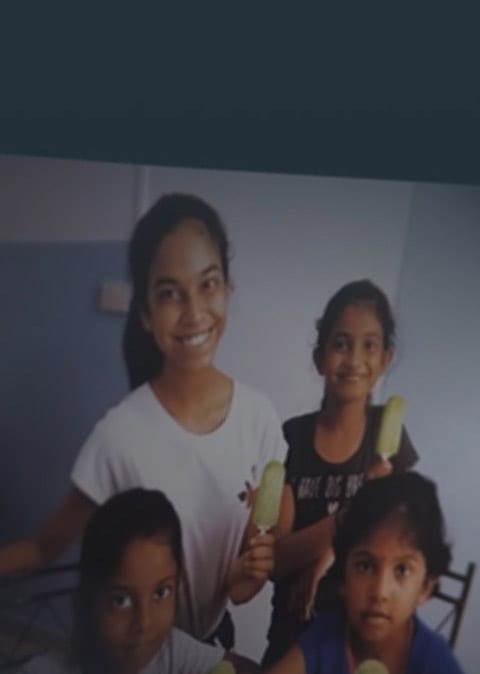- The volunteering rate has returned to pre-pandemic levels, while the donation rate has remained stable.
- Childhood involvement, spiritual affiliation, knowledge of current affairs and perceived effects of volunteerism were identified as predictors of giving.
- The study also explored factors such as trust, financial and time constraints in influencing giving.
SINGAPORE, 12 June 2024 – The National Volunteer and Philanthropy Centre (NVPC) today released its latest findings on the state of giving in Singapore, through the launch of the National Giving Study (NGS) 2023 report. The NGS 2023 is a continuation of the Individual Giving Study (IGS) conducted every two to three years, with the last one conducted in 2021. The NGS 2023 report reveals a thriving giving landscape where the donation rate has remained stable and volunteering has surged, indicating a strong return to pre-pandemic levels of community engagement.
Stable Donation Rate and Increased Volunteering, Decrease in Median Contributions
- While the donation rate has held stable at 62%, closely mirroring the 2021 figure of 60%, the more notable rise is seen in the volunteerism rate. The volunteering rate increased significantly from 22% in 2021 to 30% in 2023, reflecting a robust recovery, likely due to the lifting of COVID-19 restrictions. This return to pre-pandemic levels suggests that Singaporeans are actively returning to volunteer activities.
- Despite the increase in participation, there has been a noticeable decrease in the median donation amount and volunteer hours. In 2021, the median donation was $200 and individuals volunteered for 12 hours on average; these figures have dropped to $100 and 9 hours, respectively, in 2023.
Giving Landscape in Singapore Remains Dynamic, with Diverse Predictors to Giving
- Amidst the reported trends, the NGS 2023 finds that Singaporeans continue to make an effort to give by adapting their giving behaviours. One such example is how more givers are leveraging their ties or networks to promote giving. Others choose to share testimonies or stories instead, highlighting causes close to their heart on platforms such as social media to inspire others to give. This broadening of the definition of giving suggests an increasing openness to consider different ways to contribute. This finding was particularly significant among youths, who were more likely to have contributed to a cause by petitioning, voicing their opinions concerning social issues online, attending physical discussions or keeping up to date with public figures through social media.
- The NGS 2023 also further uncovered four interesting predictors of giving behaviour. Similar to previous studies, perceptions of volunteerism continue to be a significant factor in predicting giving. Those who are motivated by other-centred reasons and who are able to see clear impact of their experience, were significantly more likely to continue volunteering and do so more frequently.
- Three new predictors were included for the first time in the study. They are:
- Interest in social issues: A keen interest in staying informed about current affairs was shown to predict giving behaviour.
- Childhood giving: Individuals who volunteered or donated before the age of 13 were statistically more likely to have done so in the past 12 months.
- Religiosity and spirituality: Those who subjectively perceive religion to be more important in their lives, and those who attend religious services regularly, were more likely to give.
Financial and Time Constraints Shown to be Barriers to Giving, with Trust Emerging as a New Factor
- Aside from predictors to giving, the study also delved into possible barriers to giving. While personal monthly income was found to be a moderate predictor of how much people donate, we found that income together with perceived financial constraints constituted a substantially stronger predictor of how much one donates. Time-related concerns, on the other hand, were cited as one of the top three factors negatively affecting volunteerism, with it being more prevalent among the younger generation.
- The study also explored a new dimension, trust, on its possible influence on giving behaviour. Perhaps reflecting the rise in scam cases, concerns about fraud appear to be on many people’s minds. Fear of scams was cited as a major reason for not donating by 32% of those who did not donate in 2023—a 9%-point increase since 2021. This pattern held across age groups. Separately, having a positive or trusting perception of charities–believing that they make good use of funds, or otherwise seeing them as generally reliable–was a clear positive predictor of the frequency of making donations.
Strengthening The Resilience of the Singapore Giving Landscape
- Looking at the larger context, NGS 2023 as a whole showcases the resilience of giving in Singapore. Based on the responses, we see that people are still giving what they can, in ways they could, adapting their behaviours to micro-giving or giving in other forms. This suggests an increasing openness to embracing a broadened view of giving. Aside from Time (volunteerism) and Treasure (donation), respondents of the study are giving their Talent, Ties and Testimony (5Ts). This shift in trend proves that many people in Singapore are embracing giving as a social norm and will adapt their giving behaviour according to prevailing societal trends and personal circumstances. These individual giving efforts collectively help to build a more caring and gracious society where everyone can contribute their own part to making a difference.
- The report also highlighted recommendations to promote and encourage giving based on the findings of the study, through possibilities such as:
- Framing giving altruistically, as a way of helping and understanding others, rather than as a self-serving activity (to boost career, to network etc).
- Providing volunteers with regular and concrete experience of their impact.
- Providing opportunities for exposure to giving in childhood, and further explore the links between childhood and adult giving.
- Utilising the media space to highlight pressing social issues that required attention.
- Encouraging good governance and transparency in charities to foster trust among stakeholders.
- Exploring different forms of giving, including micro-giving, to allow people of diverse skillsets and background to contribute.
- Commenting on the findings of the report, Tony Soh, CEO of NVPC, said: “The National Giving Study 2023 marks yet another significant milestone in our journey at NVPC, with its findings reinforcing our theme this year: ‘Philanthropy Reimagined’, where we envision Everyone giving the 5Ts—Time, Talent, Treasure, Ties, and Testimony—Everywhere and Every Day (3Es). The report highlights a dynamic and evolving giving landscape, underscoring a shift towards more inclusive and diverse ways of engagement. Such insights are invaluable as they enable charities, groundups, and organizations within the giving landscape to better connect with givers and drive impactful contributions across Singapore. As we continue to spearhead research that produces actionable insights to advance giving in Singapore, our aim is not just to promote giving but to nurture giving as a social norm, reinforcing our commitment to building a City of Good. By supporting and expanding on these trends, NVPC is dedicated to reshaping the future of giving to make it more accessible, meaningful and impactful for all.”
– End-
For media enquiries, please contact:
| Luke Phang | [email protected] | +65 6550 9589 |




















